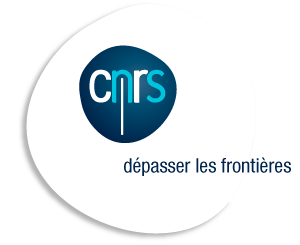Dear colleagues,
The International Seabed Authority (ISA) convened a workshop on “Regional Environmental Management Plan for the area of the Northern Mid-Atlantic Ridge” in November 2019 in Évora, Portugal (See https://www.isa.org.jm/workshop/workshop-regional-environmental-management-plan-area-northern-mid-atlantic-ridge for the details of the workshop). During the workshop break-out session, the “active vent group”, reviewed and compiled the relevant scientific information to describe active vent sites as Sites in Need of Protection relating to Article 145 of the Convention (see Appendix 1-1 of Annex IX of the report of this workshop https://ran-s3.s3.amazonaws.com/isa.org.jm/s3fs-public/files/documents/evora_workshop.pdf).
As a post-workshop activity, in consultation with the ISA secretariat, the “active vent group” of the Evora workshop (S Gollner, R Boschen-Rose, A Colaço, A Gebruk, P Halpin, E Menini, N Mestre, J Sarrazin, K Szafranski, C Van Dover) has been in the process of further enhancing the compilation of relevant scientific information. While we have compiled additional scientific information (mostly peer-reviewed scientific articles) that allow us to further enhance the relevant scientific information as described in the workshop report, we still identify some data gaps, in particular regarding 11 confirmed active vent sites between ~3°N and 30°N (Lost City, Broken Spur, TAG, Snake Pit, Pobeda, Logatchev 1, Logatchev 2, Semyenov 2, Irinovskoe, Ashadze 2 and Ashadze 1).
In this context, we would greatly appreciate it if you can have share relevant scientific information in the form of publications, including “peer-reviewed articles, scientific papers, reports and/or expert knowledge based on direct observation” for the following vent sites:
(1) Site Lost City:
- information on nurseries or discrete feeding, breeding, or spawning areas
- information on life history stages (e.g. nursery grounds or rearing areas)
(2) Site Pobeda:
Any further biological information in addition to the following: “Other representatives of typical MAR active vent fauna include snails (Phymorhynchus ovatus), sea spiders (Sericosura heteroscela), fragments of crabs (Bythograeidae gen. sp.) and tubes of chaetopterid polychaetes) (Molodtsova 2017). According to Gablina et al. (2018), “shrimp and bivalves” were observed at Pobeda-1 in the area of black smokers.”
(3) Site Logatchev 2:
Any further biological information in addition to the following: “An extensive field (several tens of m across) of dead mussel shells (B. puteoserpensis) was found on the slope of the mound that had a weakly active chimney on top expelling shimmering water. Only a few live mussels, as well as shrimps Rimicaris chacei and Mirocaris fortunata were recorded on the single active chimney (Gebruk et al., 2010). Cherkashev et al. (2000) reported one TV-grab sample taken at Logatchev-2 (14°43.2N, 44°58.3’W, depth 2677 m) which brought an empty shell of Phymorchynchus sp. and the subfossil valves of two vesicomyids, one, ~220 mm long, identified later as Abyssogena southwardae and the second, 32.5 mm long, Vesicomya sp. (Krylova E.M., pers. comm.).”
(4) Site Irinovskoe:
Any further biological information in addition to the following: “Escartin et al. (2017) reported bacterial mats and diffuse lower-temperature outflow in the immediate vicinity of two active vents.”
(5) Site Ashadze 2:
Any further biological information in addition to the following: “Information on biota of Ashadze-2 is very limited, some remarks were made based on Victor6000 dives during the Serpentine Cruise (Cruise Report, 2007). Active vents at the bottom of a crater and in a narrow graben-like trough could not be accessed with the ROV. However, shrimps resembling Mirocaris fortunata were observed through the shimmering water. At some distance from active vents, populations of Demospongia and cladorhyzid (carnivorous) sponges were reported.”
Please send the information (including a .pdf of the source) to sabine.gollner@nioz.nl before the 1st of March 2020.
The goal is to prepare a report (possibly in the form of peer-reviewed article) on an updated compilation of scientific information, which can be submitted as information to the forthcoming ISA workshop on REMP (15-19 June 2020) where environmental management measures for the N MAR will be discussed. Please see the call for information for this workshop at https://www.isa.org.jm/workshop/workshop-regional-environmental-management-plan-area-northern-mid-atlantic-ridge-focus-pms.
We are looking forward to your replies and please distribute among your networks. Thank you!
With kind regards,
Sabine Gollner
Dr. Sabine Gollner
Royal Netherlands Institute for Sea Research
Ocean Systems
Landsdiep 4
1797 SZ 't Horntje (Texel)
The Netherlands
+31 222 369 426
sabine.gollner@nioz.nl




